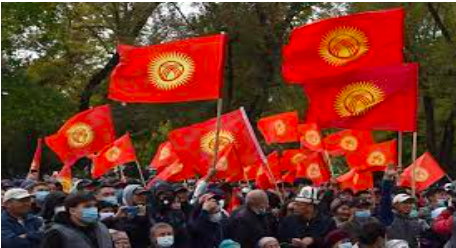Devi/Mother Goddess in pre-Puranic discourse
Posted on : September 30, 2019Author : AGA Admin

The perception of Devi or Divine Feminine power as Mother Goddess is an integral part of Indian and Oriental civilization. The discovery of terracotta figurines in Indus Valley civilization dating between 3000 B.C and 1st century B.C., points to the archaic roots of the mother goddess. The RigVeda took a dual view of this cult of Divine Femininity –one spiritual and the other traditional. The traditional line was the same as prevailed among the primitive Indus community, which perceived the Divine Female as Mother Goddess. The Rigveda perceives the Female power asMahimata—literally meaning Mother Earth. At certain places, the Vedic literature alludes to Her alternatively as Viraj—the universal mother; as Aditi–the mother of gods; and as Ambhrini—the one born of Primeval Ocean. In Vedic mysticism the cosmos and all things pre-exist but are unmanifest. The Proto-Female who is perceived as Vak or Vanimakes the pre-exiting things manifest. The Proto Female has been perceived also as Ushas—the glowing light of early morning. What the darkness of night makes unmanifest, Ushas makes manifest. In metaphysical theorization, which Vedic literature enunciates, ‘all things exist but become manifest in Her, that is, in the Proto Female.’ The Upanishads identify this Vedic Proto Female as Prakriti, the manifest nature, which is the material aspect of the Creation. The Upanishads suggest that She is the all-pervasive cosmic energy inherent in all existent things. The Vedas and Upanishads therefore weave around Devi a body of mysticism. But in popular tradition as suggested by HarivanshaPurana—a 4th/5th century religious treatise, She is identified as the Goddess of Jungle and hill tribes and was still the same simple unmystified puritan mother Goddess. Her ties with the primitive man were emotional and relatively strong. However there also emerged, simultaneously with this worship cult, and obviously inspired by Upanishad’s mysticism, a body of metaphysics, which perceived the Divine Female as Shakti—the guided cosmic energy and the transcendental source and support of all creatures and created things. The Mahabharata, in line with this Vedic mysticism, alludes Her as the source of all things—spiritual as well as material. According to the Mahabharata, this metaphysical being, the Mother Goddess of the primitive man, is the root and cause of everything; the eternal upholder of Dharma and truth, of happiness, salvation, prosperity as well as sorrow, grief and pain. It is with the emergence of Puranic literature in the post Mahabharata era when the Devi theme became a fundamental aspect of the Brahmanic discourse around 5th century AD and the cult of mother goddess became synonymous with that of Shakti—the elixir of life and cosmos.




